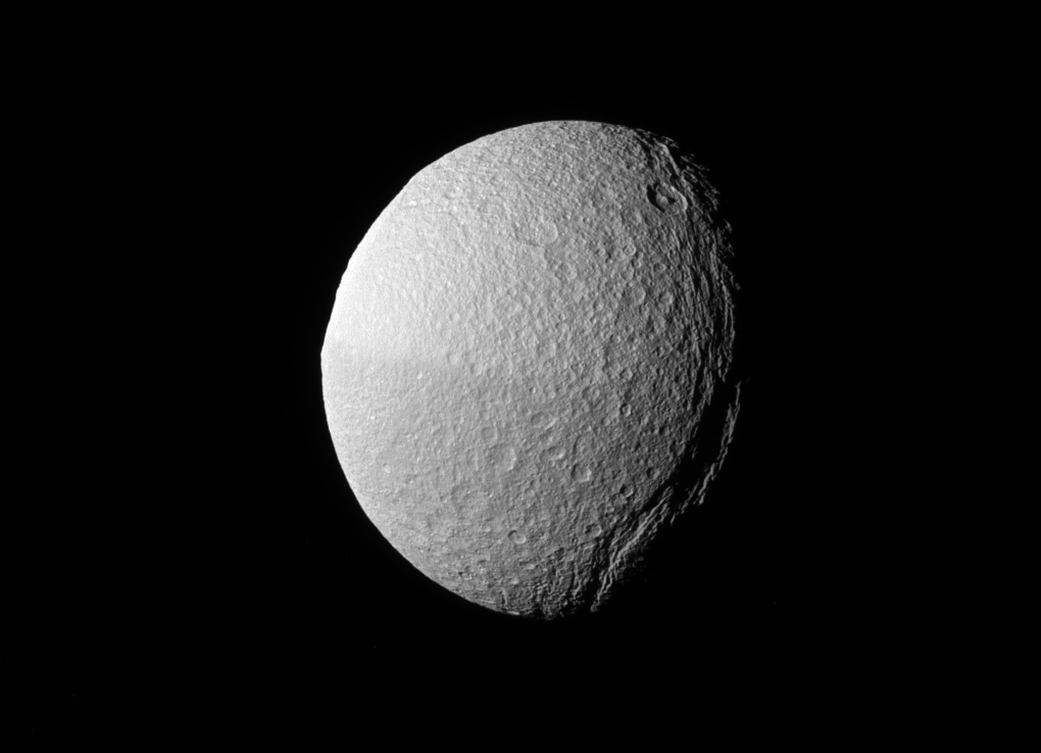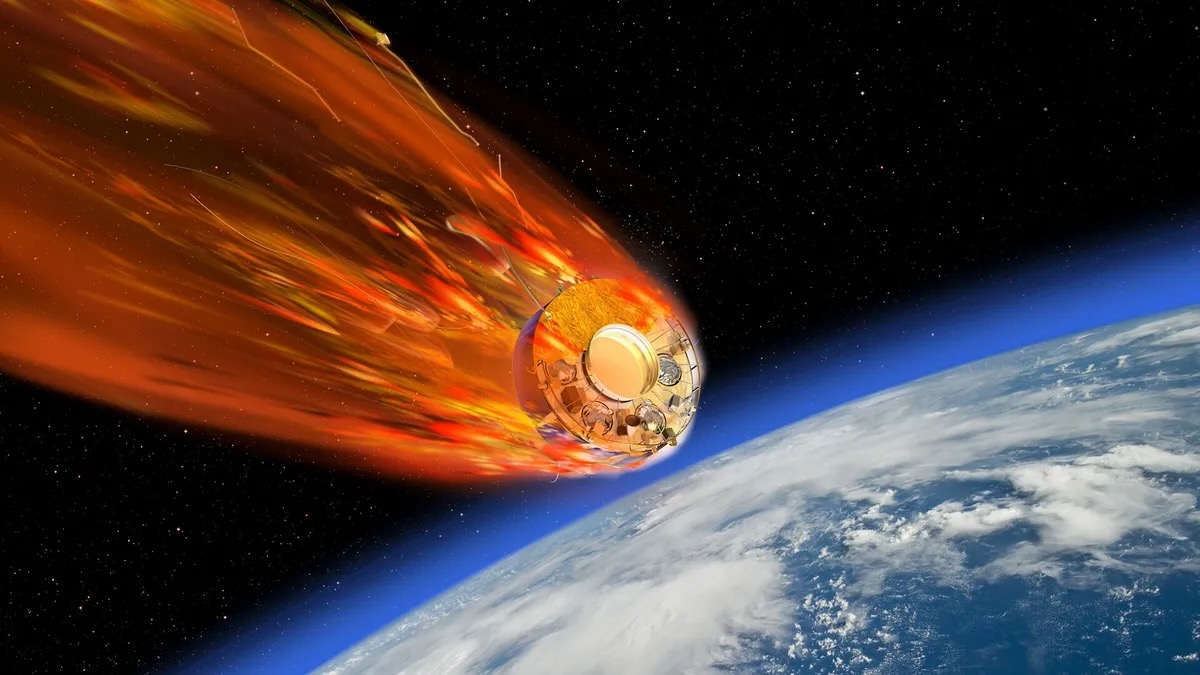Saturn Moon Tethys' Giant Canyon Snakes into Darkness in Cassini Photo

The giant canyon on Saturn's battered moon Tethys snakes into darkness in a new photo by NASA's Cassini spacecraft.
The canyon, known as Ithaca Chasma, is visible at the image's lower right, near the terminator — the line between a celestial object's dayside and nightside.
"Ithaca Chasma is up to 60 miles (100 kilometers) wide, and runs nearly three-fourths of the way around icy Tethys (660 miles or 1,062 kilometers across)," NASA officials wrote in a statement today (April 24). "The canyon has a maximum depth of nearly 2.4 miles (4 kilometers) deep."
The contours of Tethys' other large, remarkable feature — a crater called Odysseus, which makes the moon look like an eyeball when viewed from some angles — are barely visible at the upper left, NASA officials added.
Though the space agency released the photo today, Cassini actually captured it on Jan. 30, 2017, when the probe was about 221,000 miles (356,000 km) from Tethys. The image scale is about 1.2 miles (2 km) per pixel.
The $3.2 billion Cassini-Huygens mission — a joint effort of NASA, the European Space Agency and the Italian Space Agency — launched in October 1997 and reached the Saturn system in July 2004. (Huygens was a piggyback lander that touched down on the Saturn moon Titan in January 2005.)
Cassini's fuel is running out, and therefore, the orbiter's work at the ringed planet is almost done. On Wednesday (April 26), Cassini will begin the Grand Finale phase of its mission, performing the first of 22 dives between Saturn's cloud tops and the gas giant's innermost ring. (This gap is just 1,500 miles, or 2,400 km, wide.)
Get the Space.com Newsletter
Breaking space news, the latest updates on rocket launches, skywatching events and more!
Cassini will go out in a blaze of glory on Sept. 15, plunging into Saturn's atmosphere in a death dive designed to ensure that the probe doesn't contaminate Titan or fellow Saturn satellite Enceladus with microbes from Earth. Scientists think that both moons may be capable of supporting life.
Follow Mike Wall on Twitter @michaeldwall and Google+. Follow us @Spacedotcom, Facebook or Google+. Originally published on Space.com.
Join our Space Forums to keep talking space on the latest missions, night sky and more! And if you have a news tip, correction or comment, let us know at: community@space.com.

Michael Wall is a Senior Space Writer with Space.com and joined the team in 2010. He primarily covers exoplanets, spaceflight and military space, but has been known to dabble in the space art beat. His book about the search for alien life, "Out There," was published on Nov. 13, 2018. Before becoming a science writer, Michael worked as a herpetologist and wildlife biologist. He has a Ph.D. in evolutionary biology from the University of Sydney, Australia, a bachelor's degree from the University of Arizona, and a graduate certificate in science writing from the University of California, Santa Cruz. To find out what his latest project is, you can follow Michael on Twitter.
